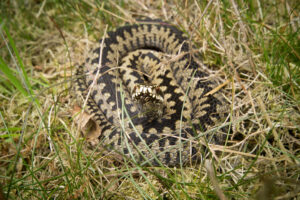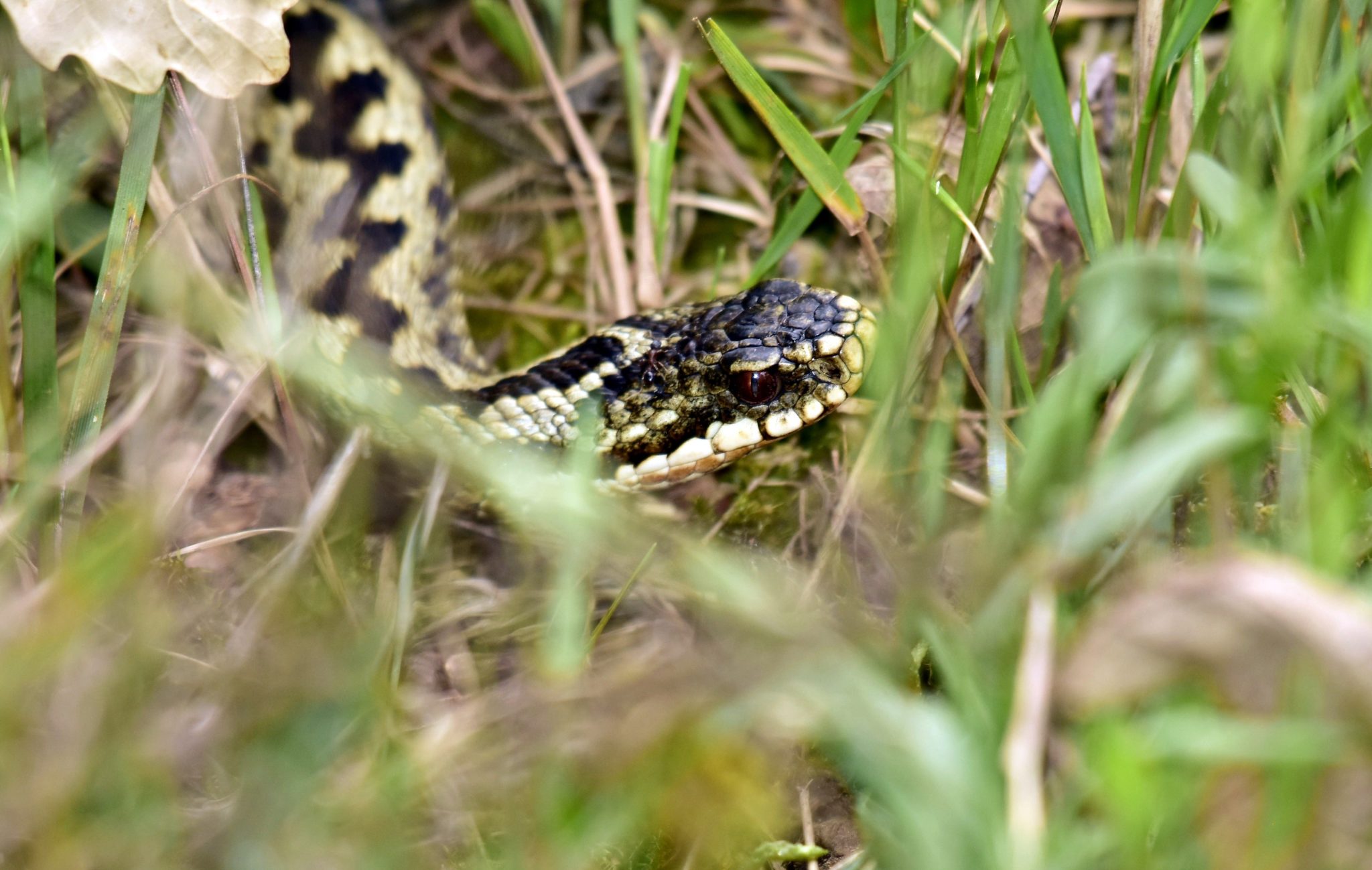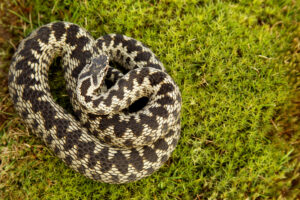Adders are relatively small, stocky snakes which prefer woodland, heathland and moorland habitat. They are grey or reddish brown, with a darker and very distinct zig-zag pattern down their backs. Rarer black forms are also sometimes spotted.
Behaviour
Adders hibernate from October, emerging in the first warm days of March, which is the easiest time of year to find them basking on a log or under a warm rock.
They hunt lizards and small mammals, as well as ground-nesting birds such as skylark and meadow pipit.
Size
- Length: 65cm
- Weight: 50-180g
- Average lifespan: 8-10 years
Status
Protected in the UK under the Wildlife and Countryside Act 1981 and classified as a Priority Species in the UK Biodiversity Action Plan.
Distribution
Widespread across the Scottish mainland, but not found on many of the Scottish islands.
When to see
March – October
Facts
- The adder is Britain’s only venomous snake, but its poison is generally of little danger to humans: an adder bite can be very painful and cause a nasty inflammation, but despite stories is really only dangerous to the very young, ill or old.
- Adders are secretive animals that prefer to slither off into the undergrowth than confront and bite humans and domestic animals; most attacks happen when they are trodden on or picked up. Instead, they use their venom to immobilise and kill their prey of small mammals, nestlings and lizards.
Watch our online talk on Scotland’s amphibians and reptiles



